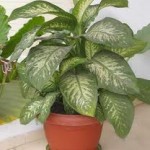Written by Senior Editor Peter Gehr

Best Puppy Love Researchers Say Produces Oxytocin in Pet Owners
Best puppy love researchers say produces oxytocin in pet owners. So what is oxytocin and how does it affect us? According to Wikipedia, oxytocin is basically the “love hormone.” It’s linked to bonding and maternal feelings. In fact, the same feelings people feel for their children.
This is extremely interesting to me, and I often hear dog owners say, “He won’t bite. He never bites anyone,” and the dog turns around and bites a visitor for no apparent reason. I’ve experienced this myself when I called on a client to discuss business and after much assurance that the Rottweiler wouldn’t bite, and that it was safe to enter the house, the dog exploded like a demon and flew at me in uncontrollable aggression.
The owner of the dog was mortified that his darling Fido had done what he described as “uncharacteristic,” and “completely unexpected.” I could see the fear in the dog eyes, and my gut feeling was that he was not to be trusted. There are more complicated aspects to that sort of behavior, but I’m focusing here on the much the same response a parent would have about their child. It’s that protective, maternal and blinded-by-the-bond relationship that can often cause a pet owner to underestimate their dog’s response.
Best Puppy Love Researchers Say Produces Oxytocin in Pet Owners
The following story describes such pet/owner relationships:
BULL terrier breeder Norm Jessup dotes on his dogs like children. They sit on chairs beside him and nuzzle into his shoulders seeking affection while he sips a cup of tea.
These dogs once held a fearsome reputation with their sloped ”Roman noses”, sunken eyes and powerful jaws – attributes bred over generations for fighting bulls. He embraces his animals with a father’s warmth.
Research has proven that in these tender moments dog owners produce a hormone called oxytocin – the same hormone which helps parents bond with their children. But experts, such as animal behaviorist Dr Linda Marston, believe this bond can blind owners to their dog’s dangerous potential.
”It’s like that rosy glasses effect,” she says. ”People see their own dogs, generally speaking, in a much more positive light than other people might see them because they love them.”
Researchers at Azabu University in Japan found that a dog’s gaze is enough to increase their owner’s oxytocin level.
And that feeling is probably mutual. Dr Marston says dogs experience similar feelings in the close company of their owners. ”When your oxytocin levels go up so do the dog’s.”
Jessup keeps his six dogs in a secure network of cages at his Pearcedale home on Melbourne’s outskirts. He watches closely when he lets them out.
Jessup says the bull terrier breed has suffered from bad publicity and insists they are friendly and gentle. ”They are a strong-looking dog and I can imagine people being a bit scared. But their nature isn’t that way unless they’re in the wrong hands,” he says.
Animal behavior experts believe irresponsible owners of dogs with a violent heritage may be incapable of judging when their animal is a threat due to their close relationship.
Let’s face it, there are dogs that look intimidating, especially when they’re being led down the street by an outwardly aggressive looking owner who allows his dog to lunge at people, growl and bark incessantly at people passing by. If oxytocin is playing a part in this unhealthy relationship between dog and owner, it raises the issues that won’t go away despite all efforts to try to sell people on the idea that a Pitt Bull is a cute and cuddly puppy.
Unfortunately, these dogs have been demonized mostly by the owners who train them to be aggressive and encourage that sort of unruly and frightening behavior.
More often than not, the problem lies with the owner, and not the dog. I’m sure you’ve seen a vicious Chihuahua, and you may also know someone with a Pitt Bull who wouldn’t hurt a flea. It all depends on the input, the training and the environment in which the dogs lives.
Dr Marston opposes banning particular dog breeds but believes owners must understand the purpose for which their dog, including the bull terrier, was originally bred.
”They had to go in and hang on to a bull’s nose even though it had a rampaging huge animal attached to the end of it until they brought the bull down by effectively suffocating it.”
He admits the dogs evoke fear in others. ”Sometimes I see people move away. I’ve even overheard a parent say ‘don’t go near those dogs they’re dangerous’,” he says. ”I just think they’re misinterpreted.”
Brimbank Superintendent Graham Kent says some criminals treat aggressive dogs as status symbols and use them to terrorise people in crimes such as enforcing drug debts.
He has supervised investigations of dog attacks and instances in which vicious dogs were used as weapons. ”We sometimes see people walking around the suburbs with these dogs. They’ll have their dog on display and they’ll have their tattoos on display. It’s a bit about a show of force and intimidation,” he says. ”You can’t help but think it might be a status symbol.”
Jessup fears ”incorrect publicity” about bull terriers will result in them joining Victoria’s dangerous dogs list alongside pit bulls. ”The bull terrier over the years has carried the tarnished name that it’s an aggressive dog but it’s not,” he says.
Jessup and Vartanian insist their bull terrier breeds make great pets. But Jessup says owners and breeders should have to meet rigorous standards of education and safety. ”In the wrong hands any dog can be an issue,” he says. Click here to visit the original source of this post
Best puppy love researchers say produces oxytocin in pet owners, and that’s often because people like to treat their dog like a person, and the relationship develops into an imbalanced and unnatural bond. I’m not saying we shouldn’t love our dogs, it’s hard not to as they grow as part of our families and lives. The point is that to ignore all the dog’s attributes as an animal is going to potentially backfire. Loving our puppies is human and we should love and care for them, and it’s our responsibility to train them well—much like you need to parent your kids. Oxytocin should, however, be controlled by remembering that your dog is a dog and not a person.













